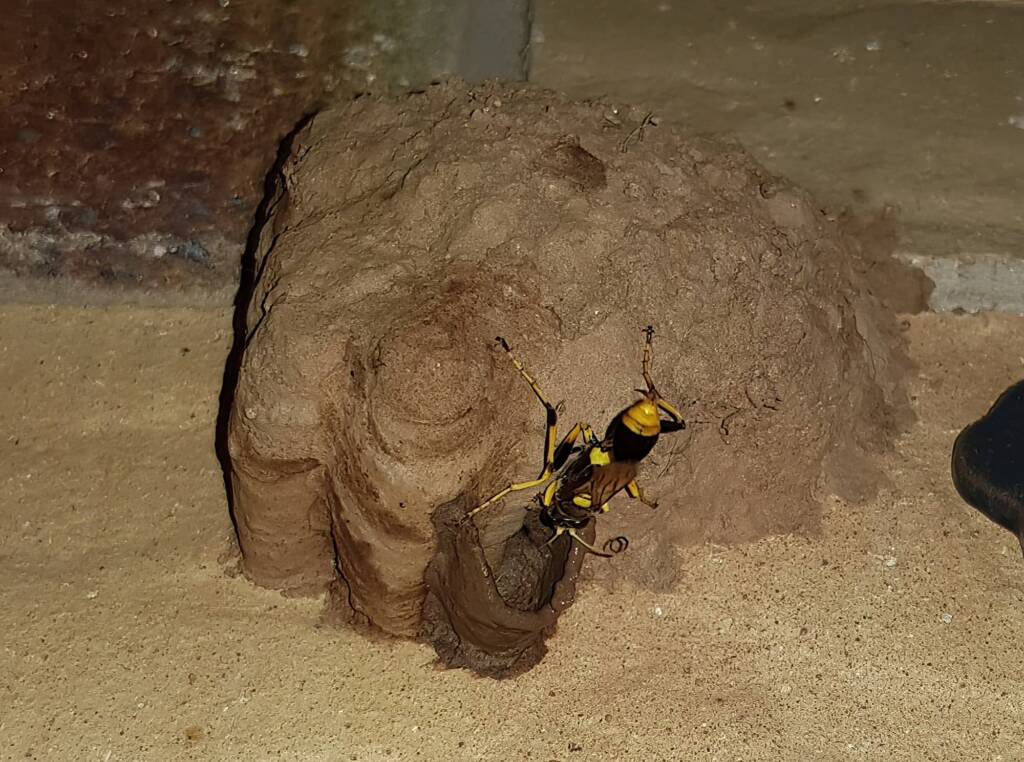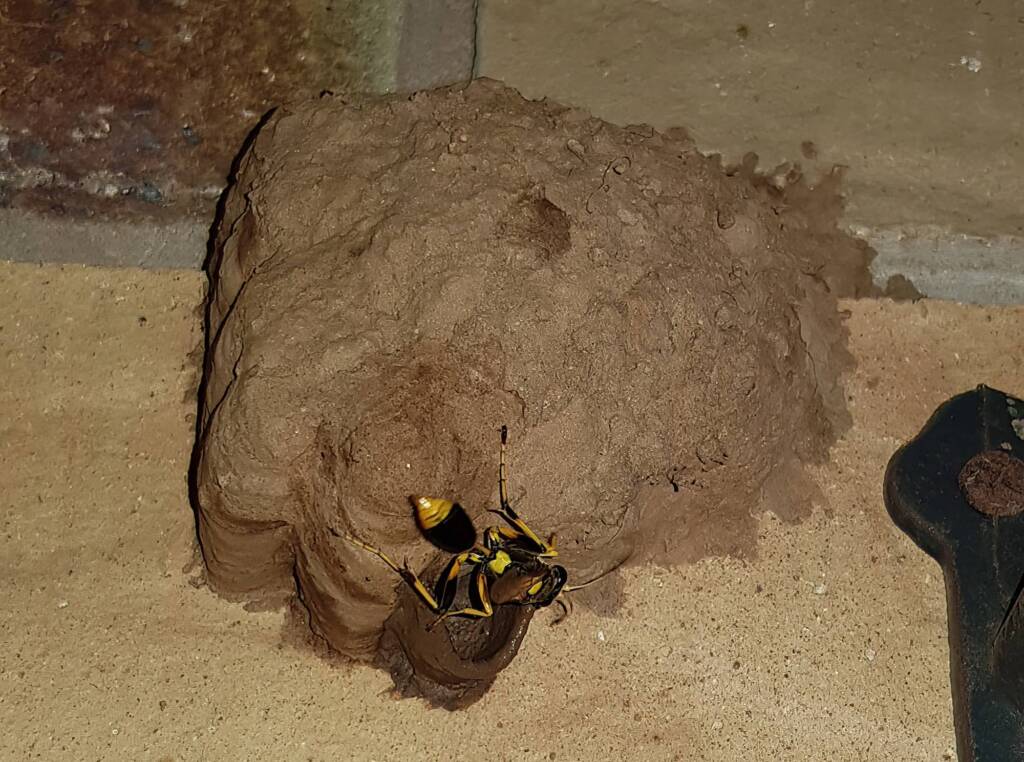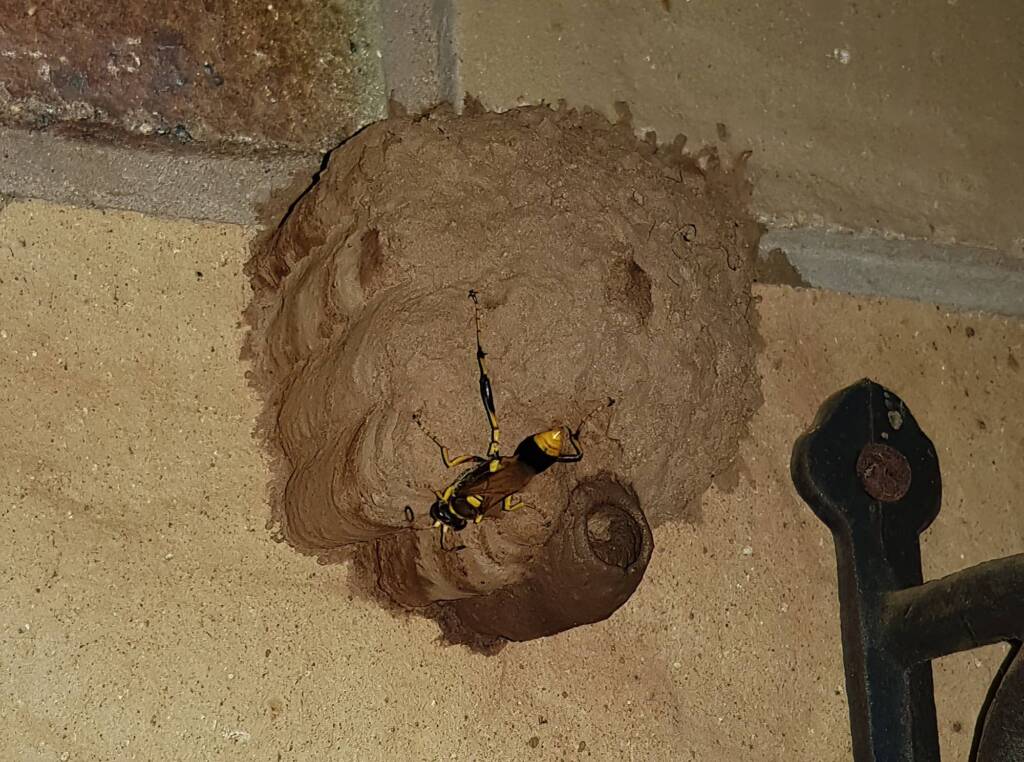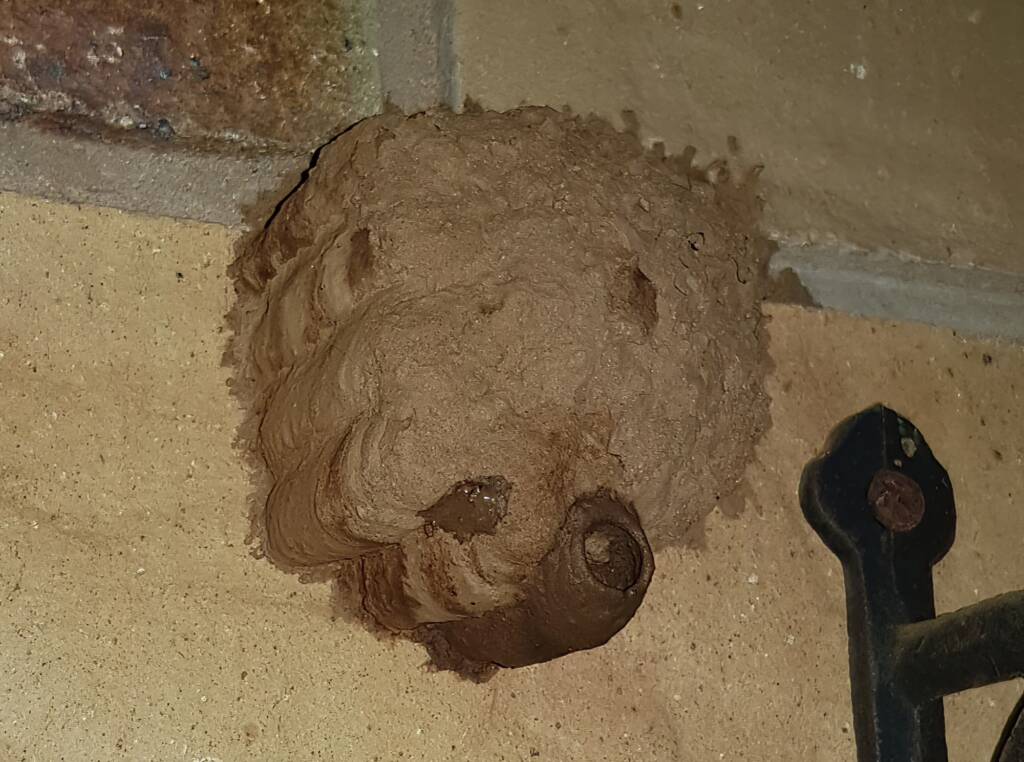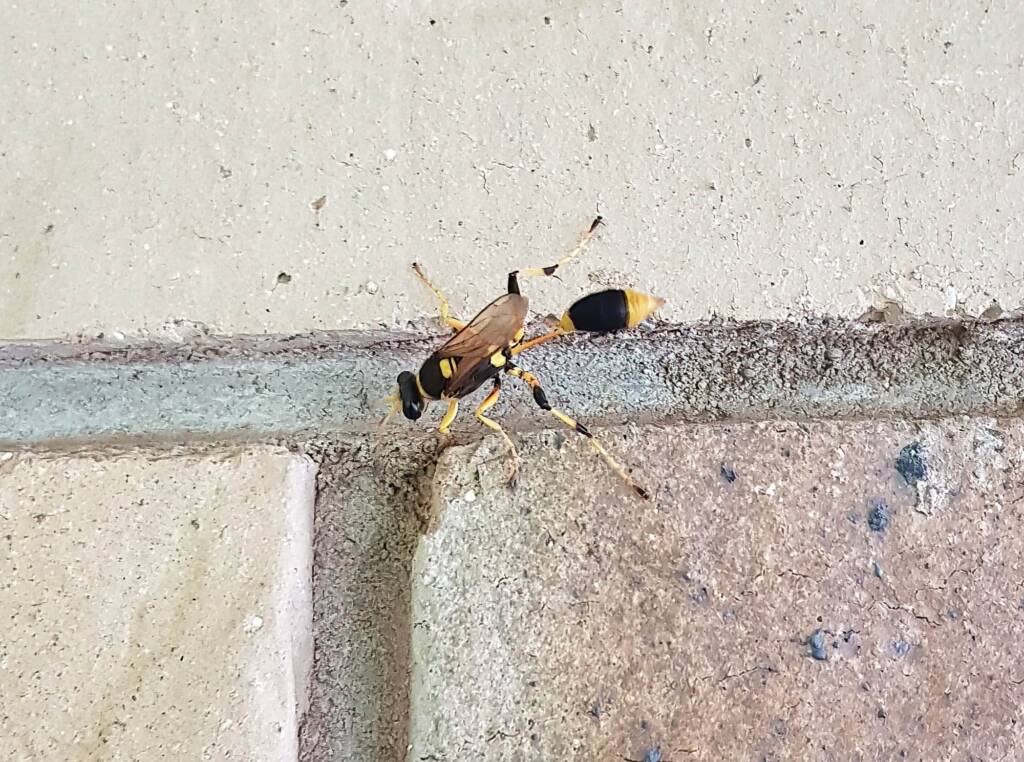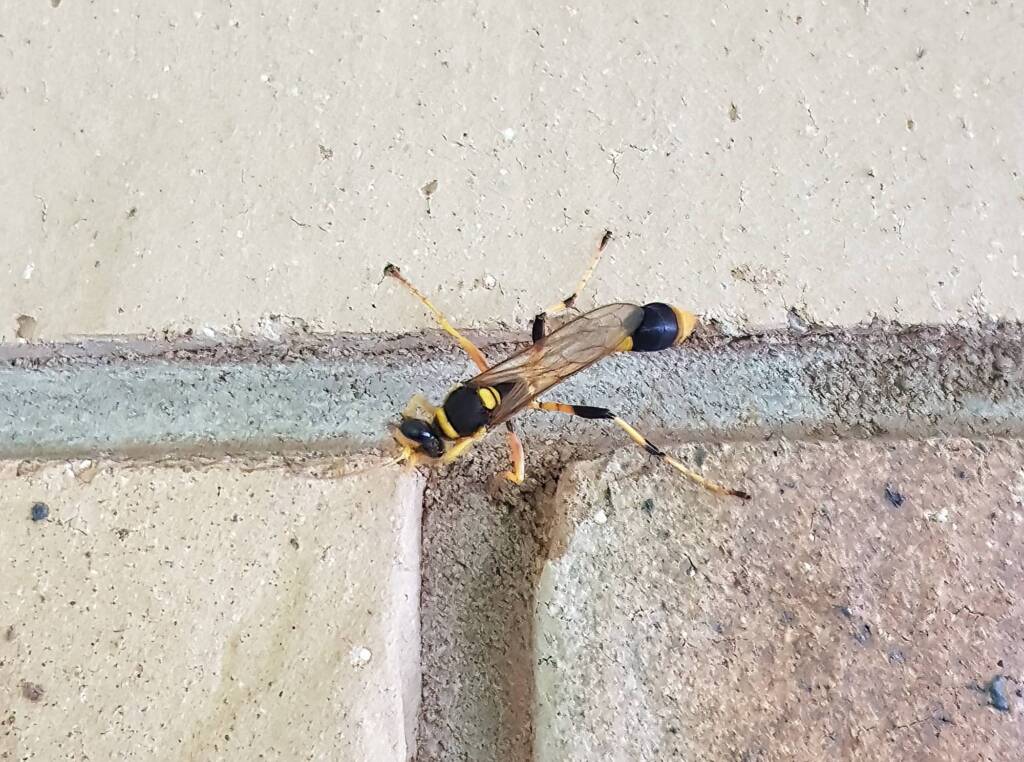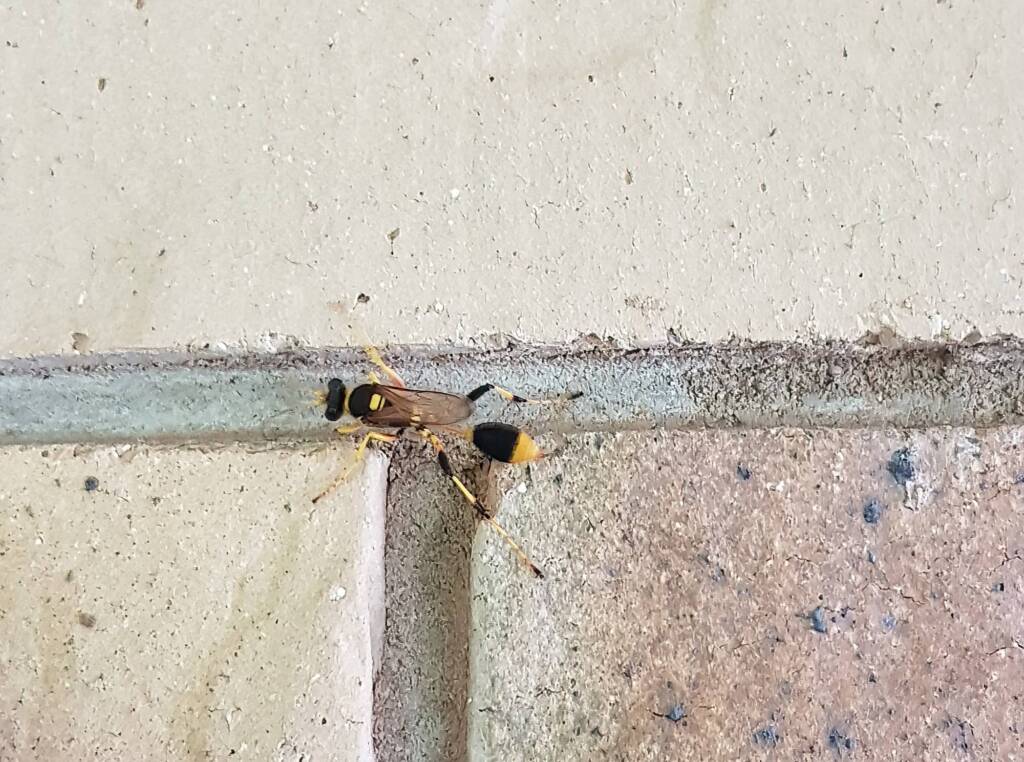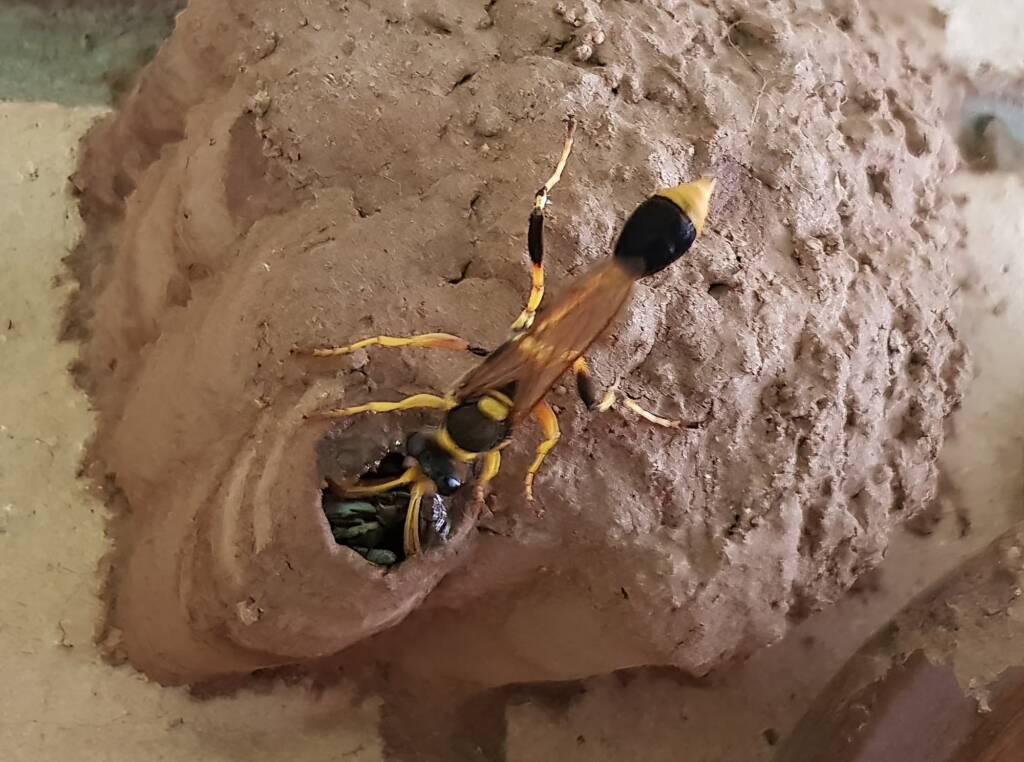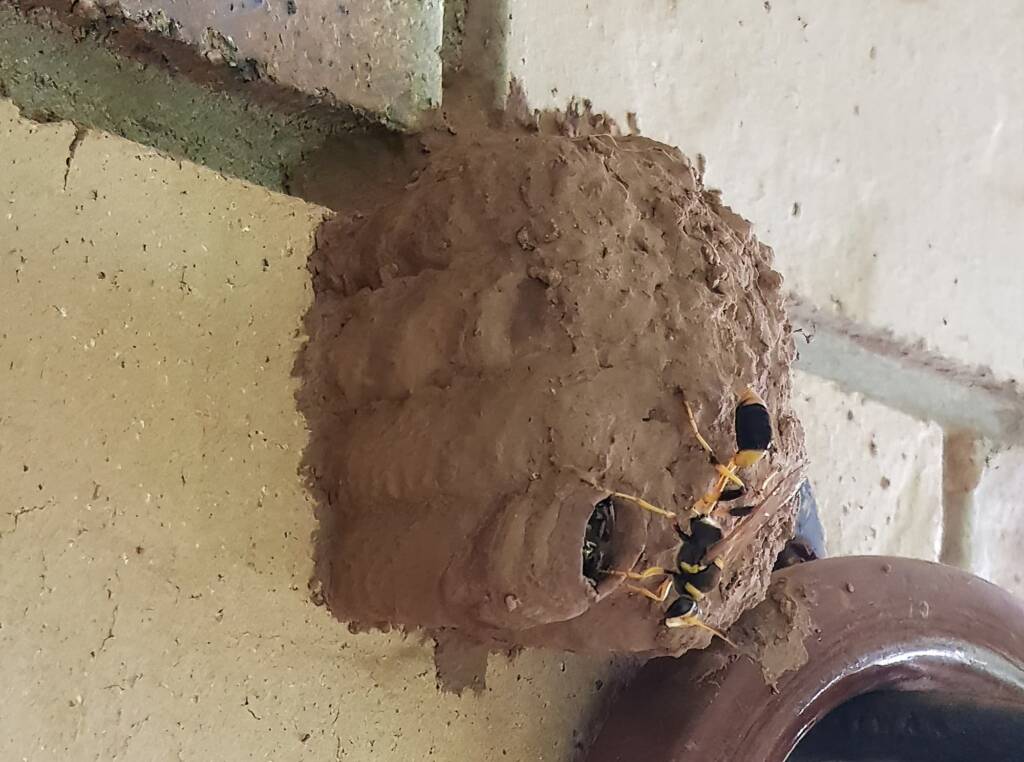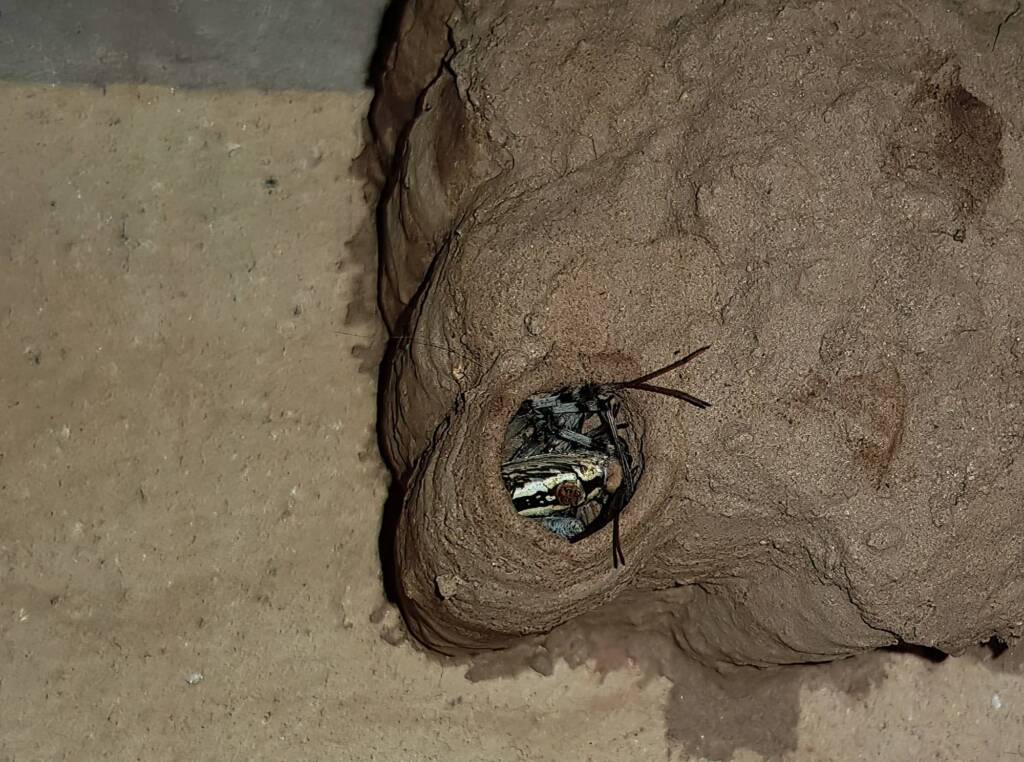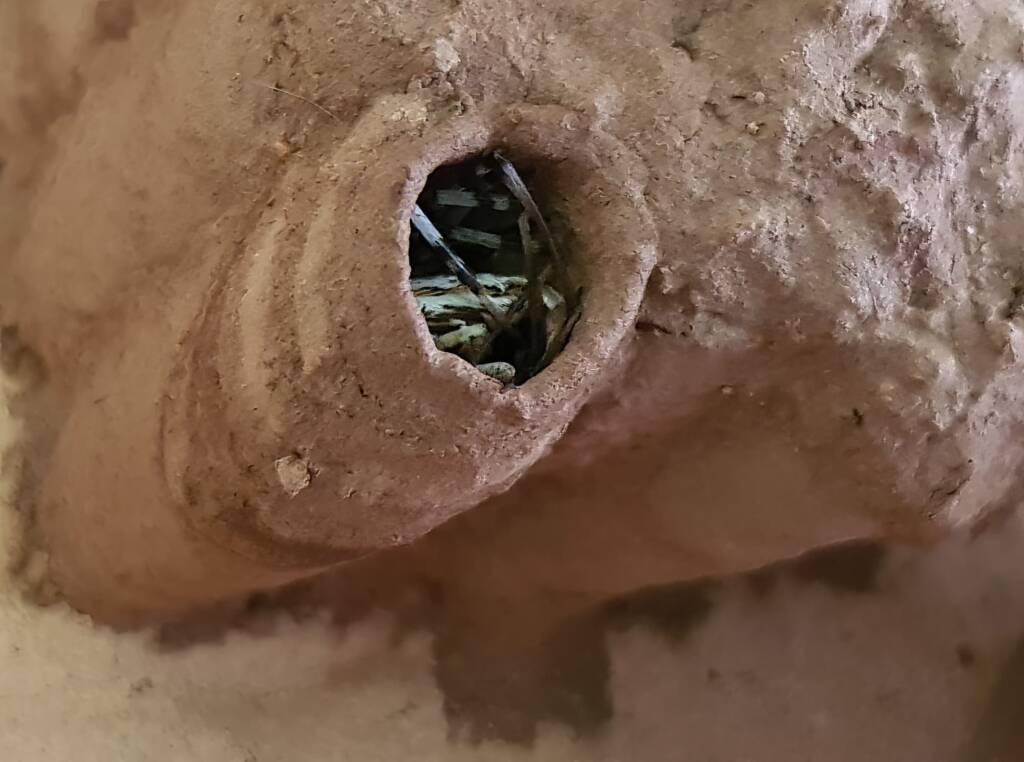Alice Springs Fauna •
Alice Springs WaspsAbispa ephippium Agriomyia maculata Bembicinae Bembix Blue Hairy Flower Wasp Cryptocheilus Cryptocheilus bicolor Delta latreillei Delta philantes Eumeninae Mud Nests and Potter Wasps Orchid Dupe Wasp Paralastor (Potter Wasp) Pseudabispa bicolor ssp. nigrocinctoides Sceliphron laetum Thynnid Flower Wasps Velvet Ant Family (Tribe Dasymutillini) Yellow Hairy Flower Wasp (Radumeris radula) Yellow Hairy Flower Wasp (Radumeris tasmaniensis)
Native to Australia and south-eastern Asia, Sceliphron laetum is one of the species of mud-dauber wasps. Members of this genus Sceliphron are solitary, building their cells out of mud, provisioning them with paralysed spiders, and laying an egg in each.
The following images were in the early evening (a flash was used to pick up the details) of the Sceliphron laetum wasp creating another nesting cell in the mud nest.
The adult Sceliphron laetum body is black and yellow with a long thin waist, with the body up to 3 cm long.
The adult wasp feed mainly on nectar. The spiders they catch, are paralysed and placed inside the nest cells to feed their young (larvae). It is believed that the spiders you can just see in the nest cell is the Long-tailed St. Andrew’s Cross Spider (Argiope protensa), some of which were seen in the same garden area, and have suddenly disappeared from their web.
Once the paralysed spiders are placed in the mud cell with the larva, the cell is then sealed. It is thought that she will lay a total of about eight eggs in the nest.
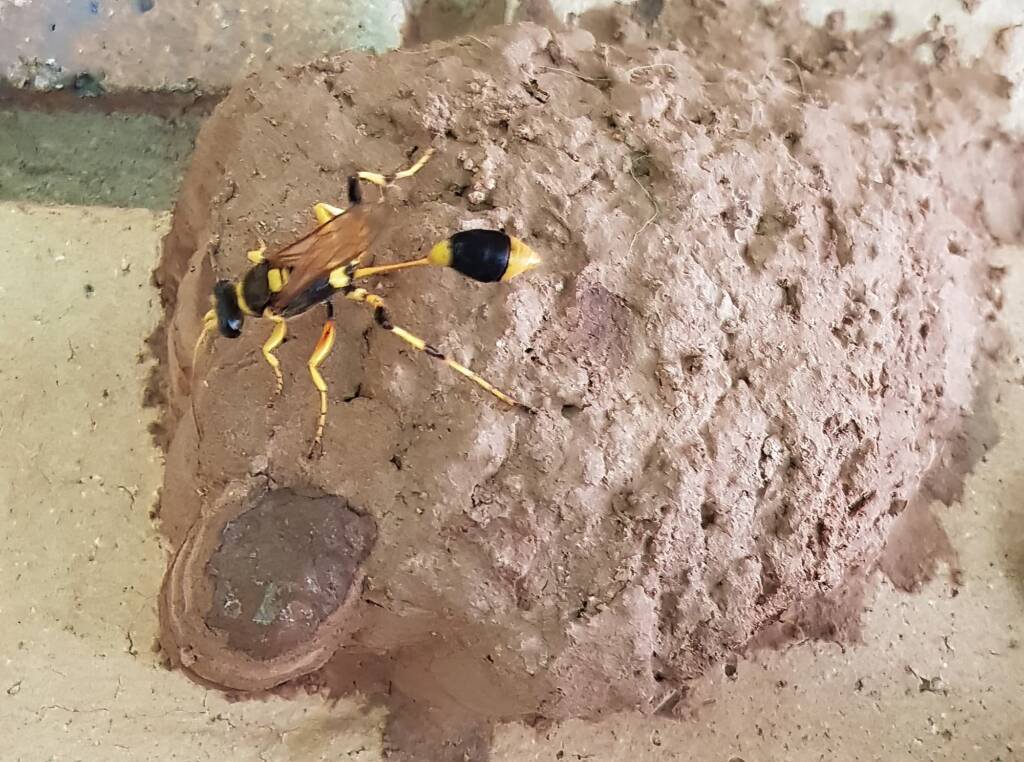
Check out our Fauna > Insects > Wasps.
- Scientific classification
- Kingdom: Animalia
- Phylum: Arthropoda
- Subphylum: Hexapoda
- Class: Insecta
- Subclass: Pterygota
- Order: Hymenoptera
- Suborder: Apocrita
- Infraorder: Aculeata
- Superfamily: Apoidea
- Family: Sphecidae
- Subfamily: Sceliphrinae
- Tribe: Sceliphrini
- Genus: Sceliphron
- Species: Sceliphron laetum
Footnote & References
- Many thanks for ID by Russell’ Yong, member of Entomology Australia “Invertebratology”, https://www.facebook.com/groups/507004496955277/
- Covered-cell Mud-dauber Wasp (Sceliphron laetum), iNaturalistAU, https://inaturalist.ala.org.au/taxa/326131-Sceliphron-laetum
- Sceliphron laetum (Smith, 1856), Atlas of Living Australia, https://bie.ala.org.au/species/https://biodiversity.org.au/afd/taxa/1a03ac28-58ba-46c9-a175-fe9cf12c6cf5
- Wasps, water and mud, by Kerri-Lee Harris, 15 February 2018, Life in a Southern Forest, https://southernforestlife.net/travels/2018/2/15/wasps-water-and-mud
Alice Springs WaspsAbispa ephippium Agriomyia maculata Bembicinae Bembix Blue Hairy Flower Wasp Cryptocheilus Cryptocheilus bicolor Delta latreillei Delta philantes Eumeninae Mud Nests and Potter Wasps Orchid Dupe Wasp Paralastor (Potter Wasp) Pseudabispa bicolor ssp. nigrocinctoides Sceliphron laetum Thynnid Flower Wasps Velvet Ant Family (Tribe Dasymutillini) Yellow Hairy Flower Wasp (Radumeris radula) Yellow Hairy Flower Wasp (Radumeris tasmaniensis)
Alice Springs FaunaAlice Springs Native Bees Alice Springs Beetles Alice Springs Birds Alice Springs Gastropods (Gastropoda) Alice Springs Insects Alice Springs Marsupials Alice Springs Reptiles Alice Springs Spiders
Alice Springs FloraAlice Springs Flora Index Acacia ligulata Annual Yellowtop Apple Bush Bougainvillea Burdekin Plum Carob Tree (Ceratonia siliqa) Cattle Bush Desert Cotton (Aerva javanica) Desert Oak Eremophila Wildberry Feijoa sellowiana Flannel Cudweed Fork-leaf Corkwood Ghost Gum Golden Everlasting Kurrajong Lemon-flowered Gum MacDonnell’s Desert Fuchsia Native Bluebell Native Tomato Needlewood Olive Tree Perennial Yellow Top Rat’s Tail River Red Gum Inland River Red Gum Rosy Dock Round-leaved Mallee Scurvy Grass Silky Eremophila Stemodia viscosa Striped Mintbush Sturt’s Desert Pea Sturt’s Desert Rose Tangled Leschenaultia Tar Vine Weeping Bottlebrush White Cedar Yellow Billybutton Yellow-keeled Swainsona Yellow Oleander

